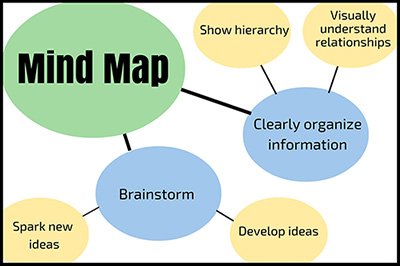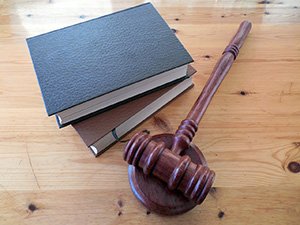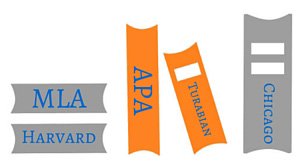Getting Started
Essay writing: it might not be your favorite thing in the world, but the essay editing experts at Scribendi are here to change that by making it a little less scary and a lot more fun! (Okay—perhaps "fun" is a bit strong. How about "bearable"?)
While there are four main types of essays—expository, persuasive, analytical, and argumentative—the basic structure of any essay is the same:
- An introductory paragraph
- At least three body paragraphs
- A concluding paragraph
- A bibliography
Generally, the higher your level of education, the more complex your essay structure will be. While high school students typically stick with the five-paragraph essay, university and graduate students are expected to discuss topics that require more than five paragraphs to flesh out. Whatever type of essay you're writing, following this basic format will help you accomplish your intended goal.
This ultimate essay checklist will provide you with everything you need to unleash your knowledge and express your creativity while following standard essay-writing conventions. This essay checklist will show you how to write a stellar essay of any style, and it will give you the confidence to explore and write about any topic.
The Ultimate Essay Checklist
General Tips
- Get an early start. It's much easier to come up with and organize your ideas when you're not pressed for time and are able to conduct proper research. The earlier you start, the easier it will be . . . so don't procrastinate!
- Choose a topic. Your instructor will likely give you a handful of topics to choose from or a general topic area. Depending on the instructions you're given, you will have to select and refine the topic. You can choose something you're already interested in or something you know nothing about—either way, you'll be doing your research and learning along the way.
- Use various sources of information. With the vast amount of information available today, you're far from limited when it comes to choosing your sources. Use books, websites, journal articles, research studies, interviews—the world is your oyster! Just remember to keep track of your sources so that you can cite them properly and add them to your bibliography. Also check what kinds of sources your professor wants: primary, secondary, or both?
- Brainstorm (original) ideas. Brainstorm ideas, and use mind mapping to come up with an original thesis statement. Mind maps are diagrams that help you organize your thoughts and visually understand how they are connected. Your goal should be to develop a thesis statement that embodies the focus and direction of your essay—it's what your essay is all about.

- Do not plagiarize. Cite your work and give credit where it's due. Do not take credit for others' thoughts or ideas, and make yourself aware of the basic rules for avoiding plagiarism.
- Create an outline. Make a rough outline of the sections and points of your essay. Writing your ideas down will help you organize your thoughts and see what you need to add, change, or rearrange.
- Provide evidence. Use evidence from your research to support your ideas. Each body paragraph will contain an original idea, but you will need to back it up with evidence to make it credible.
- Don't use "I" statements or make sweeping generalizations. Stay objective, and be specific.
- Grab your audience's attention. Come up with an attention-grabbing title and introduction that will make your reader want more.
- Use logic. Within each paragraph and throughout your essay, keep your ideas coherent and linear.
- Use an essay style that complements your content (and is in accordance with your professor's guidelines). There are four main types of essays:
- Expository: The writer explains an idea or issue to the reader.
- Persuasive: The writer tries to convince the reader to take his or her position on an idea, issue, or topic.
- Analytical: The writer examines and analyzes an idea, issue, or topic.
- Argumentative: The writer tries to prove that his or her position is correct.
- Answer what, why, and how. Regardless of the type of essay you write, it should answer each of these questions.
- Don't feel obliged to write your first draft in order, from introduction to bibliography. It can be difficult to write a completely linear essay when you have lots of different ideas, so start by writing whatever you're ready to write—you can put all the pieces together later. This will make the process easier and less stressful.
Introduction
The introductory paragraph broadly introduces your topic by giving your reader an overview of what your essay will be about and the points that will be discussed. It often starts with a general statement that acts as the topic sentence for the paragraph, and it provides a general discussion that leads to a specific thesis statement at the end of the paragraph.
- Do not explicitly explain your intentions. For example, do not say, "The purpose of this essay is to . . ." Instead, allow the topic sentence to help your reader identify and determine your purpose. By the time readers get to the end, they will have a comprehensive understanding of your essay and its intent.
- Choose a thesis statement that the body of your essay will be able to support. This thesis will be the "hook" of your essay, and it is often one of the last sentences in the introductory paragraph. A hook is a line that grabs the reader's attention—it "hooks" them, just like a fishing hook grabs a fish. The goal of the hook is to keep your reader interested and to clearly indicate the purpose of the essay.
Body
The body of the essay develops the argument that was outlined in the introduction.
- Use topic sentences. The topic sentence of each paragraph provides a brief summary of what the paragraph is about.
 Support each claim. The rest of the paragraph explains and supports the topic sentence, providing concrete evidence to support it. This can be done by citing specific works or quoting reputable sources. Where does the supporting evidence come from? It can come from a variety of sources (e.g., quotes, facts, opinions, case studies, or citations from books, articles, and websites).
Support each claim. The rest of the paragraph explains and supports the topic sentence, providing concrete evidence to support it. This can be done by citing specific works or quoting reputable sources. Where does the supporting evidence come from? It can come from a variety of sources (e.g., quotes, facts, opinions, case studies, or citations from books, articles, and websites).- Set up the transition to your next point. The concluding sentence of each paragraph should function as a hook and transition into the next paragraph.
- Discuss and support a different idea in each paragraph. Limit each paragraph to one main idea. The topic sentence of each paragraph will help you organize your own thoughts and let the reader know what that paragraph is about. If you're writing a five-paragraph essay, follow this general outline:
- The first paragraph contains the strongest argument and ties into the hook at the end of the introductory paragraph. Discuss your first point, elaborate on it, and provide evidence in support of it. Close with a transitional hook.
- The second paragraph contains a more neutral argument, and it ties into the hook at the end of the first paragraph. Discuss your second point, elaborate on it, and provide evidence to support it. Close with a transitional hook.
- The third paragraph contains another strong argument and ties into the hook at the end of the second paragraph. Discuss your third point, elaborate on it, and provide evidence to support it. Close with a transitional sentence that leads smoothly into the concluding paragraph.
Conclusion
In contrast to the introductory paragraph, the concluding paragraph starts out specific (by reintroducing the thesis) and becomes more general. It ties your ideas together and brings your paper to a culmination.
The concluding paragraph provides a general discussion of your findings and shows the reader that you have accomplished what you intended to at the outset.
- Restate your thesis (though not necessarily using the exact same words). In contrast to the introductory paragraph, the concluding paragraph starts out specific (by reintroducing the thesis) and becomes more general. It ties your ideas together and brings your paper to a close.
- Discuss your findings based on your research and evidence. Has your thesis been proven?
- Don't introduce any new ideas. The point here is to sum up and wrap up your essay, not to confuse readers by providing new information.
- End on a high note. You can finish the essay in a variety of ways. For example, you might provide suggestions for future research, state a call to action, share a quote, or ask a question. Depending on the topic and purpose of your essay, choose a closing line that will fit well with the rest of your essay's structure and leave readers thinking "Wow!"
Bibliography/Works Cited
The Bibliography or Works Cited page is a list of all the references you used throughout the paper. It can be alphabetized or numbered depending on the style guide you are using. While a Bibliography includes every resource you consulted when preparing your essay, a Works Cited page includes only the resources cited in your essay. Find out which is required by consulting the style guide assigned by your professor.
 Use the style guide assigned by your instructor. The most common style guides are The Publication Manual of the American Psychological Association (APA), the MLA Style Manual and Guide to Scholarly Publishing, and The Chicago Manual of Style. However, there are many other style guides (including style guides that are specific to individual universities), so check with your instructor to make sure you know which style you should be using. Remember that both your references and in-text citations must be correct and consistently follow the same style guide.
Use the style guide assigned by your instructor. The most common style guides are The Publication Manual of the American Psychological Association (APA), the MLA Style Manual and Guide to Scholarly Publishing, and The Chicago Manual of Style. However, there are many other style guides (including style guides that are specific to individual universities), so check with your instructor to make sure you know which style you should be using. Remember that both your references and in-text citations must be correct and consistently follow the same style guide.- To make creating your reference list easier, use citation software. There are many different options out there, and several of the software programs are free (especially if you're enrolled in a university that has a subscription to one of the services). These citation software programs essentially create your bibliography for you, making the process fast, easy, and accurate.
Review, Revise, Rework
- Give yourself a day or two before rereading and revising your essay. This way, you will have a fresh set of eyes, making it easier to catch any mistakes.
- Don't be afraid to rearrange paragraphs, delete sentences, or add information. Reading through your essay a few days after writing it makes it much easier to see where and how the structure needs to be changed.
- Correct any errors in spelling, grammar, and punctuation. Check the essay yourself, have a friend review it, or better yet, have your essay edited by a professional editing service.
- Avoid colloquialisms and contractions. ('Cause it just ain't professional in an academic setting. Lol.)
- Analyze the flow of your essay, and make sure that your ideas and paragraphs flow smoothly from one to the next.
- Cut out any extraneous information or fluff. We've all done it, but adding extra words to make a word count requirement doesn't fly with most professors, and it will definitely detract from the strength of your essay.
Now, it's Time to Write!
It may seem overwhelming, but writing an essay doesn't have to be stressful. After coming up with a topic, doing some research, and creating a basic outline, you're ready to start filling in the gaps. Using primary and/or secondary research, back up your ideas and support them with credible sources. Just don't forget to cite those sources! Once you've written your first draft, take a day or two away from your paper so you will have a clear head when you come back to revise it. As suggested, you may even want to have your paper edited by the professionals at Scribendi, who will not only correct any surface-level errors but will also check for consistency, clarity, and cohesiveness, providing comments and suggestions along the way.
Essay writing is so much easier if you're equipped with the right tools, and that's what we hope we've given you with this ultimate essay checklist. Now that you know how to write an essay (regardless of the style), we're confident in your ability to write an essay about any topic that your instructor might have in store for you. Happy writing!
Image sources: Foundry/Pixabay.com, succo/Pixabay.com, ClkerFreeVectorImages/Pixabay.com









